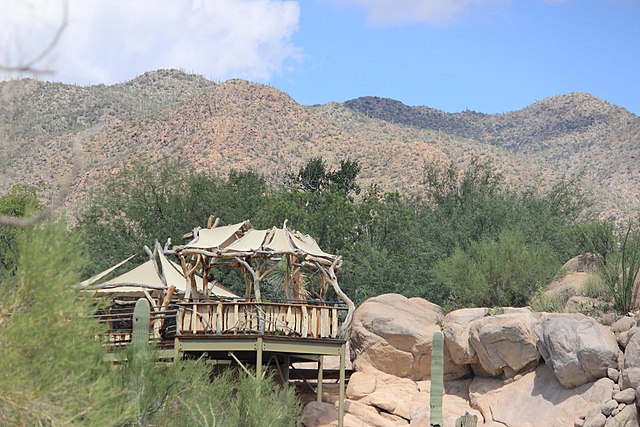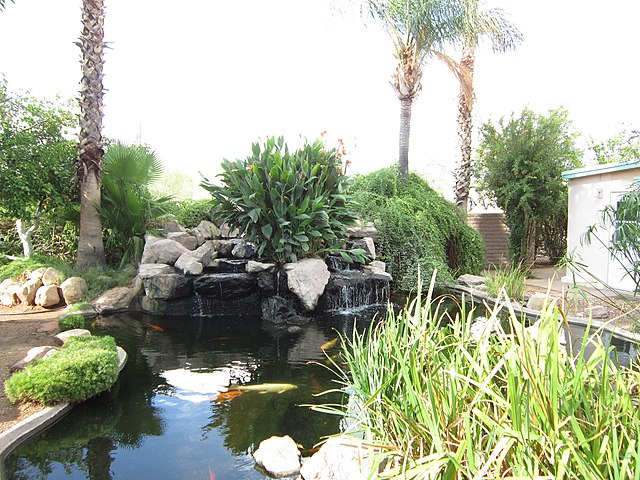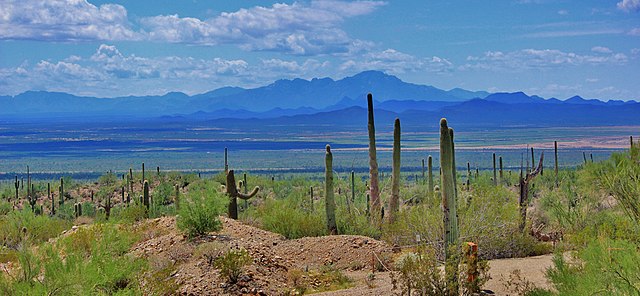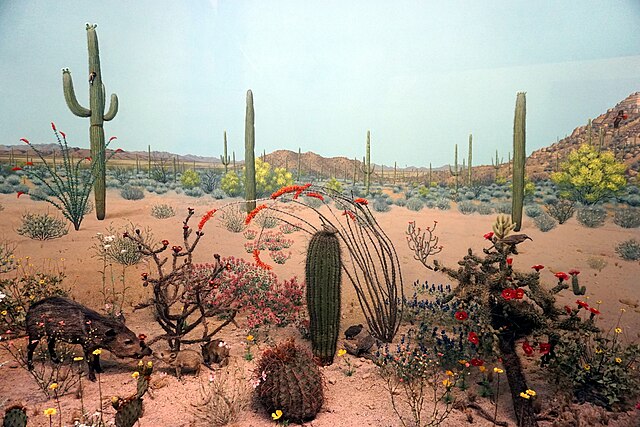Have you ever wondered what secrets the Sonoran Desert holds? Nestled in the rugged beauty of Tucson, Arizona, the Arizona-Sonora Desert Museum isn’t your typical museum experience. It’s a living, breathing showcase of one of North America’s most diverse desert ecosystems, where wildlife roams freely and ancient saguaro cacti stand as silent sentinels against the desert sky.
This isn’t just a place you visit – it’s a journey into the heart of the American Southwest that will leave you with a profound appreciation for desert life. Whether you’re a nature enthusiast, family looking for adventure, or curious traveler seeking authentic Arizona experiences, this comprehensive guide will help you make the most of your desert museum adventure.
What Makes the Arizona-Sonora Desert Museum Special?
The Arizona-Sonora Desert Museum stands as one of the world’s premier natural history institutions, but what truly sets it apart is its innovative approach to conservation and education. Unlike traditional museums with static displays, this 98-acre outdoor wonderland brings the Sonoran Desert ecosystem to life through immersive exhibits and authentic wildlife encounters.
A Living Laboratory in the Heart of Tucson
Established in 1952, the museum has evolved into a world-renowned research center that combines scientific discovery with public education. The facility houses over 230 animal species and 1,200 plant varieties, all native to the Sonoran Desert region. This living laboratory approach means every visit offers something new – animals behave naturally, plants bloom seasonally, and the desert reveals its secrets in real-time.
The museum’s commitment to conservation extends beyond its borders. Their breeding programs have successfully reintroduced endangered species back into the wild, including the Mexican wolf and thick-billed parrot. When you visit, you’re not just observing nature – you’re supporting vital conservation efforts that protect these incredible species for future generations.
More Than Just a Museum: Zoo, Garden, and Aquarium Combined
What makes your experience here truly unique is the seamless integration of multiple attractions under one admission. The museum functions as an accredited zoo, botanical garden, aquarium, and natural history museum simultaneously. This means you can observe prairie dogs in their underground burrows, marvel at hummingbirds in flight, explore underwater river ecosystems, and learn about desert geology all in one visit.
The facility’s design philosophy emphasizes natural habitats over traditional cages. Animals live in spacious enclosures that replicate their wild environments, allowing visitors to witness authentic behaviors. This approach creates more meaningful connections between visitors and wildlife, fostering a deeper understanding of desert ecosystems.
Planning Your Visit to the Sonoran Desert Museum

Timing your visit correctly can make the difference between a good experience and an unforgettable one. The Sonoran Desert’s climate and the museum’s outdoor nature mean certain times offer distinct advantages for different types of visitors.
Best Times to Visit for Optimal Experience
The ideal visiting season runs from October through April when temperatures are most comfortable for extended outdoor exploration. During these months, daytime temperatures typically range from 65-80°F, perfect for walking the museum’s extensive trail system. Wildlife activity is also highest during cooler months, as animals are more active and visible throughout the day.
Morning visits, particularly between 8:30 AM and 11:00 AM, offer the best wildlife viewing opportunities. Animals are most active during these cooler hours, and you’ll have the best chance of seeing predators like mountain lions and wolves engaged in natural behaviors. The lighting during morning hours also provides excellent photography conditions.
Summer visits require more planning but offer unique rewards. The museum opens early (7:30 AM) during summer months, allowing you to experience the desert before extreme heat sets in. Summer also brings spectacular thunderstorms and desert blooms that transform the landscape into a photographer’s paradise.
Ticket Prices and Admission Information
Understanding the museum’s pricing structure helps you plan your budget and choose the best admission option for your needs. The museum offers various ticket types designed to accommodate different visitor preferences and frequencies.
Adult and Child Pricing Structure
General admission for adults ranges from $25-30 depending on the season, with reduced rates for seniors (65+) and children (3-12). Children under 3 receive free admission. The museum also offers military discounts and group rates for parties of 15 or more. During peak season (December through March), advance online booking is highly recommended as the museum frequently reaches capacity.
Special exhibit access and behind-the-scenes tours require additional fees but provide extraordinary experiences worth the investment. These premium experiences often include animal encounters, keeper talks, and access to areas not available to general admission visitors.
Annual Membership Benefits
For frequent visitors or those planning extended stays in the Tucson area, annual memberships provide exceptional value. Individual memberships start at $65 and quickly pay for themselves with just three visits. Family memberships offer even greater savings for groups.
Membership benefits extend beyond free admission. Members receive advance notice of special events, discounts on educational programs, and reciprocal privileges at over 300 museums and zoos worldwide. The museum also hosts exclusive member events throughout the year, including dawn wildlife walks and evening photography sessions.
Top 10 Must-See Attractions at the Desert Museum
With nearly 100 acres to explore, prioritizing your time ensures you experience the museum’s highlights while leaving room for spontaneous discoveries. These attractions represent the best of what the desert museum offers, from iconic wildlife to breathtaking landscapes.
Desert Loop Trail: Your Journey Through Sonoran Landscapes
The Desert Loop Trail serves as your introduction to authentic Sonoran Desert terrain. This 0.25-mile paved pathway winds through natural desert habitat, showcasing the incredible diversity of plant life that thrives in this arid environment. Along the trail, you’ll encounter towering saguaro cacti, some over 150 years old, standing alongside barrel cacti, palo verde trees, and ocotillo plants.
Interpretive signs throughout the trail provide fascinating insights into desert ecology, plant adaptations, and the intricate relationships between desert species. The trail’s gentle elevation changes offer spectacular views of the surrounding Tucson Mountains while demonstrating how desert plants adapt to different microclimates within the same ecosystem.
Mountain Lion and Bighorn Sheep Exhibits
The mountain lion exhibit consistently ranks as visitor favorites, offering rare opportunities to observe these elusive predators in naturalistic settings. The exhibit’s design allows multiple viewing angles, and the cats are often most active during early morning and late afternoon hours. Educational displays explain mountain lion behavior, hunting techniques, and their crucial role in maintaining ecosystem balance.
The bighorn sheep enclosure showcases these incredible climbers in a rocky habitat that mimics their natural mountain environment. Watching these agile animals navigate steep terrain provides insights into their remarkable adaptations for desert mountain living. The exhibit also highlights conservation success stories, as bighorn sheep populations have recovered dramatically thanks to dedicated conservation efforts.
Hummingbird Aviary: A Magical Flight Experience
Step into the walk-through hummingbird aviary for an enchanting encounter with these tiny aerial acrobats. The aviary houses multiple hummingbird species native to the Sonoran Desert, creating a living rainbow of colors and movement. Visitors can walk through the flight space as dozens of hummingbirds zoom past, hover at feeding stations, and display their incredible flying abilities.
The aviary’s design includes multiple feeding stations, nesting areas, and native plants that provide natural food sources. Educational displays explain hummingbird migration patterns, feeding behaviors, and the critical role these tiny birds play in desert pollination. The experience is particularly magical during early morning hours when hummingbirds are most active.
Best Photography Tips for the Aviary
Capturing hummingbirds in flight requires patience and proper technique. Use a fast shutter speed (1/1000th second or faster) to freeze wing movement, and consider using continuous autofocus mode to track these rapid fliers. The aviary’s natural lighting provides excellent conditions for photography, particularly near feeding stations where hummingbirds hover predictably.
Focus on the birds’ iridescent feathers, which change color depending on viewing angle and lighting conditions. Early morning and late afternoon provide the best lighting for showcasing these brilliant colors. Bring a telephoto lens to capture intimate portraits without disturbing the birds, and be prepared to take many shots as hummingbirds move constantly.
Wildlife Encounters You’ll Never Forget

The museum’s wildlife collection represents the incredible diversity of animals that call the Sonoran Desert home. From tiny desert insects to large predators, each species demonstrates remarkable adaptations for surviving in one of North America’s most challenging environments.
Javelinas, Coyotes, and Desert Predators
The javelina exhibit offers close-up views of these pig-like mammals that roam desert washes and suburban neighborhoods throughout Arizona. Despite their somewhat comical appearance, javelinas are perfectly adapted desert survivors with excellent hearing and smell that compensate for poor eyesight. The exhibit’s naturalistic design allows visitors to observe family groups and learn about javelina social structures.
Coyotes, the ultimate desert adaptors, showcase their intelligence and versatility in a spacious habitat that includes den sites, hunting areas, and elevated viewing areas. These remarkable predators have expanded their range across North America, demonstrating incredible adaptability to changing environments. Educational displays explain coyote behavior, hunting strategies, and their important role in controlling rodent populations.
Reptile Collection: Snakes, Lizards, and Desert Adaptations
The museum’s reptile collection features over 40 species of snakes, lizards, and other reptiles native to the Sonoran Desert. This comprehensive collection includes both venomous and non-venomous species, providing visitors with opportunities to learn about desert reptile diversity and the important ecological roles these often-misunderstood animals play.
Desert-adapted lizards demonstrate fascinating survival strategies, from the fringe-toed lizard’s sand-swimming abilities to the Gila monster’s efficient metabolism. Interactive displays explain how reptiles regulate body temperature, conserve water, and find food in harsh desert conditions. The collection also includes several rare species that exist nowhere else in captivity.
Venomous vs. Non-Venomous Species Guide
Understanding the difference between venomous and non-venomous desert reptiles is crucial for anyone spending time in the Southwest. The museum’s educational displays clearly explain identification techniques, safety protocols, and the medical importance of venomous species research. Visitors learn that most desert snakes are actually beneficial, controlling rodent populations and rarely posing threats to humans.
The exhibit features live specimens of Arizona’s most significant venomous species, including rattlesnakes, coral snakes, and the Gila monster. Expert keepers provide regular educational talks explaining snake behavior, bite prevention, and first aid procedures. These presentations help visitors develop healthy respect for venomous species while reducing unnecessary fear.
Desert Gardens and Plant Collections
The museum’s botanical collections showcase the incredible diversity and beauty of desert plant life. With over 1,200 plant species represented, the gardens demonstrate that deserts are far from barren wastelands – they’re complex ecosystems supporting remarkable biodiversity.
Cactus Garden: Giants of the Sonoran Desert
The cactus garden features some of the largest and most spectacular cacti in North America. Towering saguaro cacti, some over 40 feet tall and 200 years old, dominate the landscape alongside barrel cacti, prickly pear, and cholla cacti. The garden’s design showcases how different cactus species occupy specific ecological niches within the desert environment.
Interpretive trails wind through the garden, explaining cactus growth patterns, water storage strategies, and the vital role these plants play in desert ecosystems. Many cacti produce spectacular blooms during spring months, creating colorful displays that attract pollinators and photographers alike. The garden also demonstrates how indigenous peoples used cacti for food, medicine, and construction materials.
Seasonal Blooms and Desert Wildflowers
Desert wildflower displays transform the museum’s landscape into a colorful paradise during favorable weather conditions. Spring blooms typically occur from March through May, depending on winter rainfall patterns. During exceptional years, the desert explodes with color as lupines, poppies, penstemon, and dozens of other wildflower species create spectacular displays.
The museum’s phenology program tracks blooming patterns and provides visitors with current bloom conditions. Educational displays explain how desert plants time their reproduction cycles to take advantage of favorable conditions, often remaining dormant for years until sufficient rainfall triggers dramatic blooming events.
Educational Programs and Special Events
The museum’s educational mission extends far beyond passive observation. Through innovative programs, expert-led experiences, and hands-on activities, visitors gain deeper understanding of desert ecosystems and conservation challenges.
Guided Tours and Expert-Led Experiences
Professional naturalists lead specialized tours that reveal hidden aspects of desert ecology and wildlife behavior. These expert-guided experiences provide insights unavailable to casual visitors, from animal training demonstrations to behind-the-scenes facility tours. Popular options include dawn wildlife walks, photography workshops, and keeper talks that explain animal care and conservation efforts.
The museum also offers customized tours for specific interests, whether you’re passionate about desert plants, reptiles, or conservation science. These specialized experiences often include access to research areas and opportunities to interact with museum scientists and keepers. Advanced booking is essential for these popular programs.
Children’s Programs and Family Activities
Family-friendly educational programs make the museum accessible and engaging for visitors of all ages. Children’s programs include junior naturalist activities, hands-on science experiments, and interactive games that teach desert ecology concepts through play. The museum’s education center features touch-friendly exhibits and activity stations designed specifically for young learners.
Seasonal programs align with natural cycles, teaching children about desert plant blooms, animal behaviors, and conservation challenges through age-appropriate activities. Summer camps and school field trip programs provide intensive educational experiences that inspire the next generation of conservationists.
Practical Tips for Your Desert Museum Adventure

Proper preparation ensures your visit is comfortable, safe, and memorable. The museum’s outdoor nature and desert location require specific considerations that indoor attractions don’t demand.
What to Wear and Bring for Desert Exploration
Comfortable walking shoes with good traction are essential for navigating the museum’s varied terrain. Trails include paved pathways, natural surfaces, and occasional rocky areas that require stable footing. Avoid sandals or flip-flops, as desert terrain can be unpredictable and potentially hazardous.
Sun protection is crucial year-round in the Sonoran Desert. Bring a wide-brimmed hat, sunglasses, and apply broad-spectrum sunscreen regularly. Long sleeves and pants provide additional protection while allowing air circulation. Light-colored clothing reflects heat and keeps you cooler during warmer months.
Water is your most important companion in the desert. Bring more water than you think you’ll need, especially during warmer months. The museum provides water fountains throughout the facility, but carrying your own supply ensures you stay hydrated during extended exploration. Consider bringing snacks, as walking the entire facility can take 4-6 hours.
Dining Options and Gift Shop Highlights
The museum’s Ironwood Terraces restaurant offers casual dining with spectacular desert views. The menu features Southwestern-inspired cuisine using local ingredients whenever possible. Indoor and outdoor seating accommodates different preferences, though outdoor dining provides the full desert experience with mountain vistas.
The Desert Museum Store showcases an exceptional collection of books, artwork, and educational materials focused on desert ecology and Southwestern culture. Many items are produced by local artisans, making them unique souvenirs that support the regional creative community. The store’s book selection includes comprehensive field guides, children’s books, and scientific publications written by museum staff.
Getting There: Location and Transportation
The museum’s location in Tucson Mountain Park provides easy access from multiple directions while maintaining the wild character that makes the experience special. Planning your route and arrival time helps ensure a smooth start to your desert adventure.
Driving Directions from Tucson and Phoenix
From Tucson, take Speedway Boulevard west to Kinney Road, then follow signs to the museum. The drive takes approximately 30-45 minutes from downtown Tucson and provides scenic views of the Tucson Mountains. The route passes through residential areas and gradually transitions into desert landscape, building anticipation for your museum visit.
Phoenix visitors should allow 2-3 hours for the drive, depending on traffic and route selection. Take Interstate 10 south to Tucson, then follow local directions to the museum. The drive showcases the dramatic landscape changes between the Phoenix and Tucson metropolitan areas, transitioning from Sonoran Desert valleys to mountain terrain.
Parking and Accessibility Information
The museum provides ample parking in paved lots adjacent to the entrance. Parking is free and generally available throughout the year, though early arrival is recommended during peak season. The lots accommodate RVs and large vehicles, making the museum accessible to travelers with various transportation needs.
Accessibility features include wheelchair-accessible pathways throughout most of the facility, accessible restrooms, and modified programs for visitors with special needs. The museum’s staff is trained to assist visitors with disabilities and can provide additional information about accessible routes and programs. Some areas of the museum, particularly natural desert trails, may be challenging for mobility-impaired visitors.
Conclusion
The Arizona-Sonora Desert Museum represents far more than a typical tourist attraction – it’s a gateway to understanding one of North America’s most remarkable ecosystems. Through its innovative combination of living exhibits, conservation programs, and educational experiences, the museum creates lasting connections between visitors and the natural world.
Your visit supports vital conservation efforts while providing memories that will last a lifetime. Whether you’re marveling at hummingbirds in flight, observing mountain lions in their naturalistic habitat, or learning about desert plant adaptations, every moment at the museum deepens your appreciation for the incredible diversity and beauty of desert life.
The Sonoran Desert Museum proves that education and entertainment can work hand in hand to create meaningful experiences. As you plan your visit, remember that you’re not just observing nature – you’re becoming part of a community dedicated to protecting and preserving these remarkable ecosystems for future generations.
Frequently Asked Questions
Q: How long should I plan to spend at the Arizona-Sonora Desert Museum?
A: Most visitors spend 4-6 hours exploring the museum to see all major exhibits comfortably. However, nature enthusiasts and photographers often spend entire days discovering new details and waiting for optimal wildlife viewing opportunities.
Q: Are pets allowed at the Desert Museum?
A: Pets are not permitted inside the museum for the safety of both domestic animals and wildlife. The museum’s animals might become stressed by unfamiliar scents and sounds, and desert wildlife can pose risks to pets.
Q: What’s the best time of day to see the most active wildlife?
A: Early morning hours (8:30-11:00 AM) offer the best wildlife viewing opportunities. Animals are most active during cooler temperatures, and you’ll have the best chance of seeing natural behaviors during these times.
Q: Does the museum offer special accommodations for visitors with disabilities?
A: Yes, the museum provides wheelchair-accessible pathways, accessible restrooms, and modified programs for visitors with special needs. Staff members are trained to assist visitors with disabilities and can provide detailed accessibility information.
Q: Can I bring my own food and drinks to the museum?
A: Outside food and beverages are not permitted in the museum. However, the Ironwood Terraces restaurant offers dining options, and water fountains are available throughout the facility for refilling water bottles.

